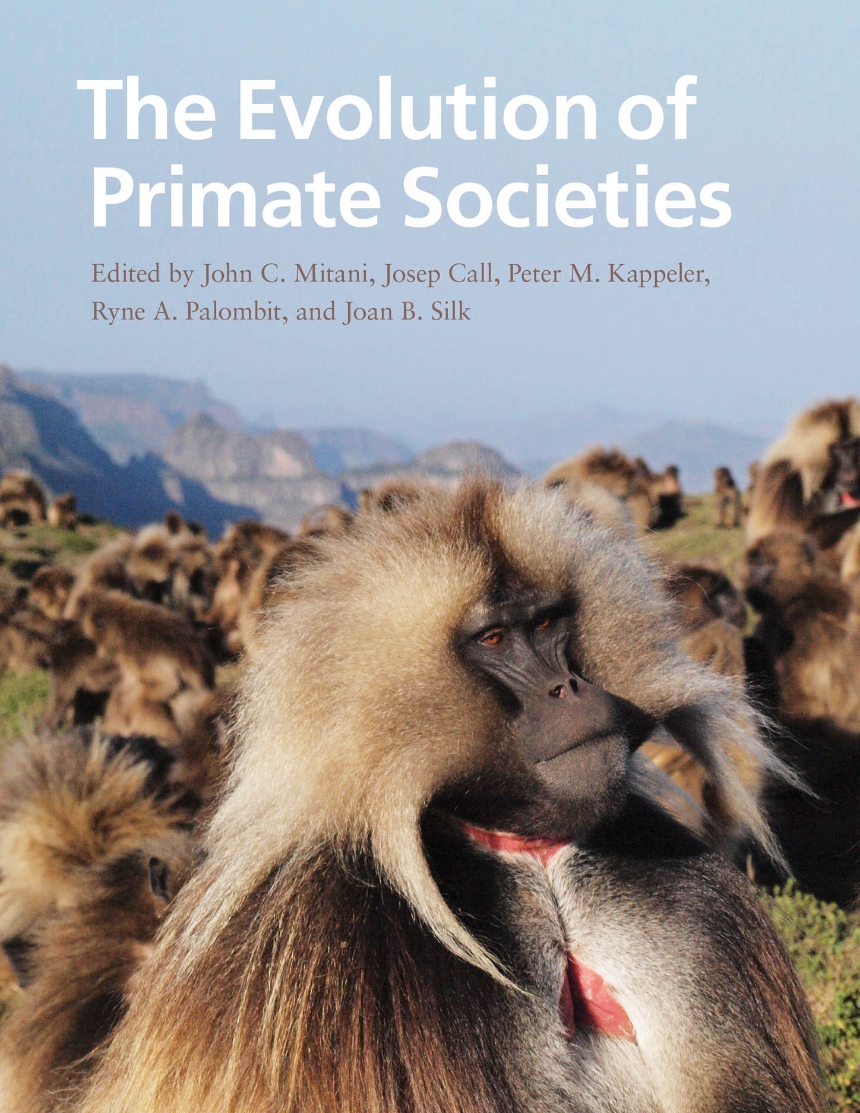The Evolution of Primate Societies
In 1987, the University of Chicago Press published Primate Societies, the standard reference in the field of primate behavior for an entire generation of students and scientists. But in the twenty-five years since its publication, new theories and research techniques for studying the Primate order have been developed, debated, and tested, forcing scientists to revise their understanding of our closest living relatives.
Intended as a sequel to Primate Societies, The Evolution of Primate Societies compiles thirty-one chapters that review the current state of knowledge regarding the behavior of nonhuman primates. Chapters are written by the leading authorities in the field and organized around four major adaptive problems primates face as they strive to grow, maintain themselves, and reproduce in the wild. The inclusion of chapters on the behavior of humans at the end of each major section represents one particularly novel aspect of the book, and it will remind readers what we can learn about ourselves through research on nonhuman primates. The final section highlights some of the innovative and cutting-edge research designed to reveal the similarities and differences between nonhuman and human primate cognition. The Evolution of Primate Societies will be every bit the landmark publication its predecessor has been.
744 pages | 157 halftones, 34 line drawings, 44 tables | 8 1/2 x 11 | © 2012
Biological Sciences: Ecology, Evolutionary Biology
Reviews
Table of Contents
Richard Wrangham
Preface
1. Introduction
The Editors
Part 1. Primate Behavioral Diversity
Table A.1 Taxonomy of Living Primates
2. The Behavioral Ecology of Strepsirrhines and Tarsiers
Peter M. Kappeler
3. The Behavior, Ecology, and Social Evolution of New World Monkeys
Eduardo Fernandez-Duque, Anthony Di Fiore, and Maren Huck
4. The Behavioral Ecology of Colobine Monkeys
Elisabeth H. M. Sterck
5. The Behavior, Ecology, and Social Evolution of Cercopithecine Monkeys
Marina Cords
6. The Apes: Taxonomy, Biogeography, Life Histories, and Behavioral Ecology
David P. Watts
Part 2. Surviving and Growing Up in a Difficult and Dangerous World
7. Food as a Selective Force in Primates
Colin A. Chapman, Jessica M. Rothman, and Joanna E. Lambert
8. Predation
Claudia Fichtel
9. Ecological and Social Influcences on Sociality
Oliver Schülke and Julia Ostner
10. Life-History Evolution
Carel P. van Schaik and Karin Isler
11. Socialization and Development of Behavior
Elizabeth V. Lonsdorf and Stephen R. Ross
12. Genetic Consequences of Primate Social Organization
Anthony Di Fiore
13 Human Survival and Life History in Evolutionary Perspective
Michael Gurven
Part 3. Mating and Rearing Offspring
14. From Maternal Investment to Lifetime Maternal Care
Maria A. van Noordwijk
15. Magnitude and Sources of Variation in Female Reproductive Performance
Anne Pusey
16. Mate Choice
Peter M. Kappeler
17. Mating, Parenting, and Male Reproductive Strategies
Martin N. Muller and Melissa Emery Thompson
18. Magnitude and Sources of Variation in Male Reproductive Performance
Susan C. Alberts
19. Infanticide: Male Strategies and Female Counterstrategies
Ryne A. Palombit
20. The Socioecology of Human Reproduction
Frank W. Marlowe
Part 4. Getting Along
21. Cooperation Among Kin
Kevin A. Langergraber
22. Cooperation among Non-kin: Reciprocity, Markets, Mutualism
Ian C. Gilby
23. The Regulation of Social Relationships
Filippo Aureli, Orlaith N. Fraser, Colleen M. Schaffner, and Gabriele Schino
24. The Adaptive Value of Sociality
Joan B. Silk
25. Social Regard: Evolving a Psychology of Cooperation
Keith Jensen
26. Human Sociality
Michael Alvard
27. Solving Ecological Problems
Charles Menzel
28. Knowledge of Social Relations
Robert M. Seyfarth and Dorothy L. Cheney
29. Communication Strategies
Klaus Zuberbühler
30. Understanding Other Minds
Josep Call and Laurie R. Santos
31. Social Learning, Traditions, and Culture
Andrew Whiten
32. Human Cultural Cognition
Esther Herrmann and Michael Tomasello
Contributors
Index
